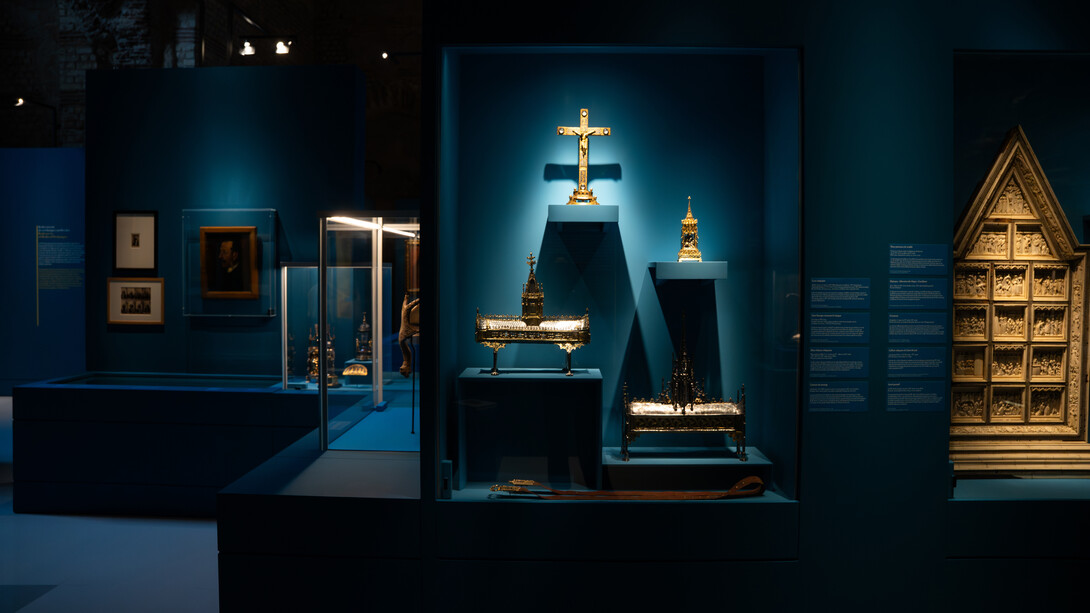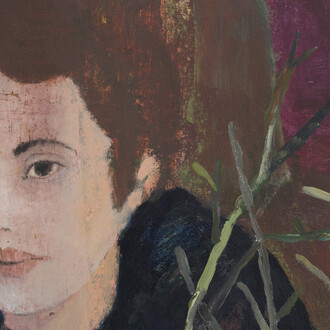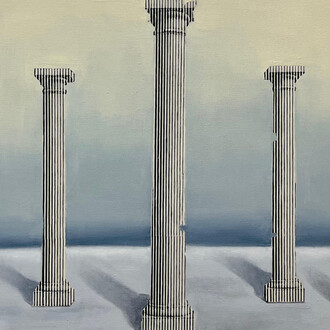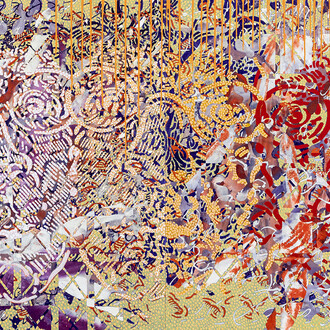In the 19th century, the Middle Ages were rediscovered and given a new interpretation. An exhibition entitled The middle ages of the 19th century : Creations and forgeries in the decorative arts, which runs from 7 October 2025 to 11 January 2026 at the Musée de Cluny – Musée National du Moyen Âge, explores the art history that helped shape our view of medieval art.
After the events of the French Revolution, the 19th century cultivated a romantic reverie brimming with medieval nostalgia, and experienced a time of significant technological progress. Major collections of medieval objects were put together at this time. This century embraced and took inspiration from the Middle Ages, producing copies, pastiches, composite works and forgeries. The exhibition offers comparisons, placing certain medieval objects alongside their 19th-century ‘counterparts’.
The exhibition focuses on the decorative arts, in the medieval sense of the term, that is, gold and silver work, enamel work, ivories and fine fabrics. These fields benefitted from a technical revival in the 19th century. These cultural and artistic phenomena appeared between 1820 to 1830 and lasted until the eve of World War I, so for around a century. Collectors, design and restoration workshops, and even forgers were key players in a thriving art market, especially in Paris, which at the time emerged as the capital of decorative arts.
The exhibition is divided into four main sections. First of all, it highlights medieval objects that became models for future work, examining them with the help of publications, tracings and drawings. Some of them even became iconic objects and often copied, such as the Alpais ciborium or the Saint-Sulpice-les-Feuilles angel. At the same time, medieval decorative art techniques were being rediscovered or modernised.
The second part considers the decisive role of collectors in putting together the first major collections of medieval art, whether private or public. It focuses in particular on the collection of Alexandre Du Sommerard, which eventually became the Musée de Cluny, or the collection of Alexander Basilewsky, the King of Collectors, who owned works of art and curios, such as the elk antler from Saint-Arnoul today housed in the Rijksmuseum in Amsterdam.
The third section explores creations produced in the manner of the Middle Ages, whether faithful imitations, pastiches or composite objects combining different styles, both in religious and secular fields. Little-known 19th-century objects from the Musée de Cluny collection will be on display for the first time, such as a large female reliquary bust or an ivory harp from the Musée du Louvre, considered to be medieval at the time of acquisition.
Finally, the last part addresses the issue of forgeries and the use of forgeries, against a background where collector demand and the search for rare objects fuelled the activities of forgers and unscrupulous traders, such as antiquities dealer Luigi Parmeggiani, also known as Louis Marcy.
This exploration has been put together using collections of decorative arts from the Musée de Cluny, together with works on loan from other French and foreign institutions, such as the Louvre, the Musée d’Orsay, the Musée des Arts Décoratifs, the Bibliothèque nationale de France, the treasury at Nancy cathedral, the Victoria & Albert Museum in London, the Palazzo Madama in Turin and the Galleria Parmeggiani in Reggio Emilia.
The middle ages of the 19th century : Creations and forgeries in the decorative arts exhibition is organised by the Musée de Cluny – Musée National du Moyen Âge and GrandPalaisRmn. It is curated by Christine Descatoire, general curator at the Musée de Cluny, and Frédéric Tixier, senior lecturer in medieval art history at the University of Lorraine.
















